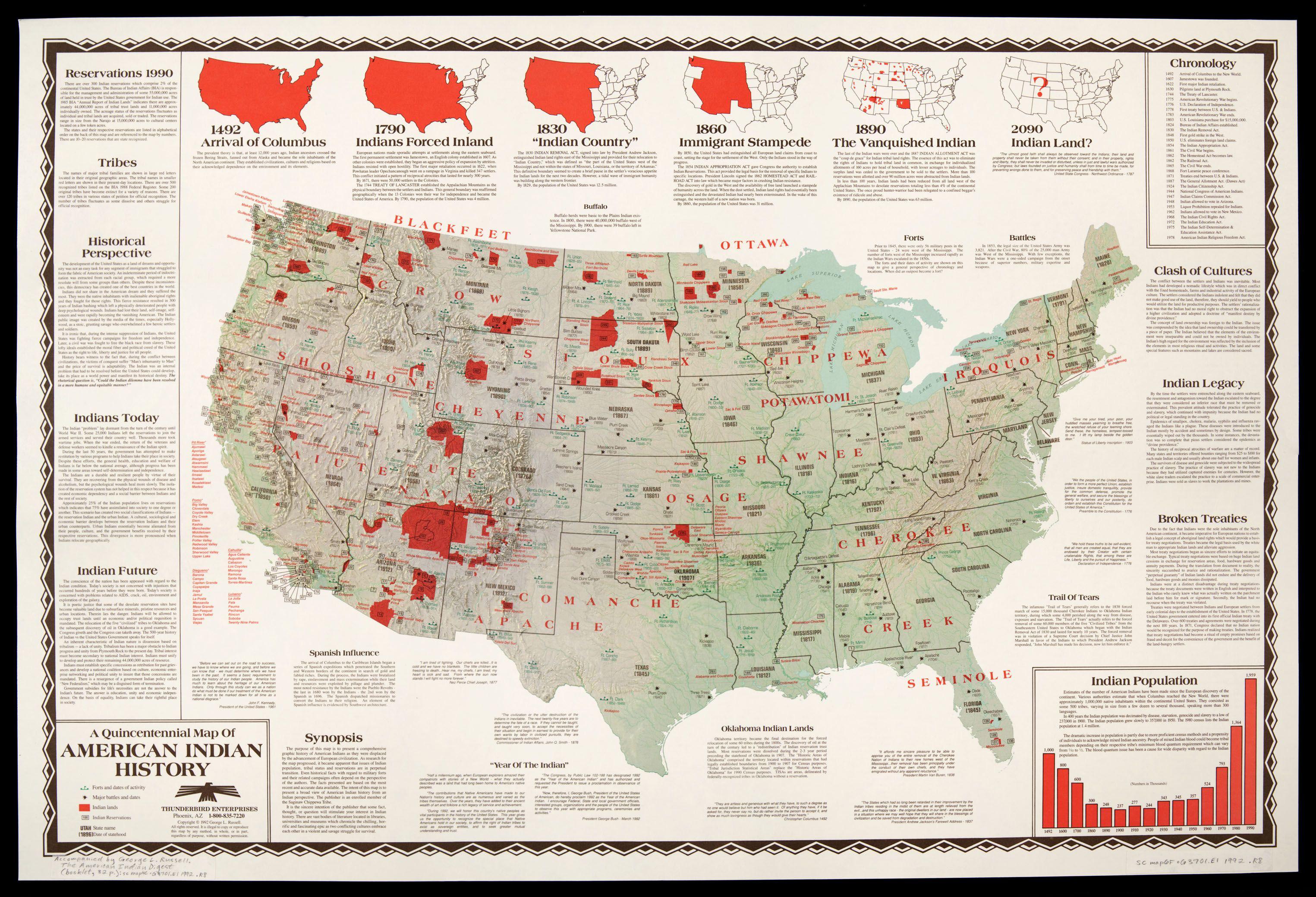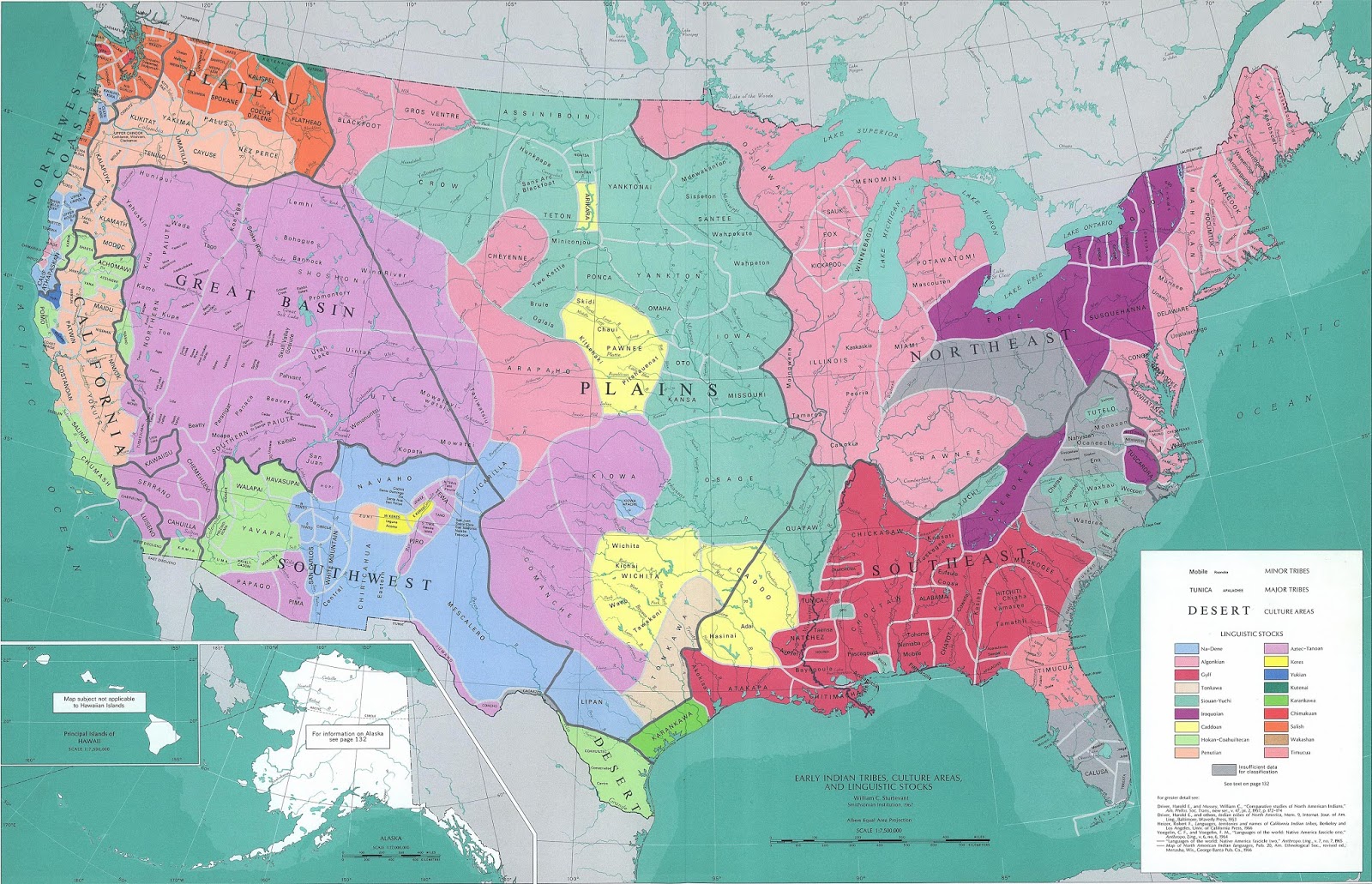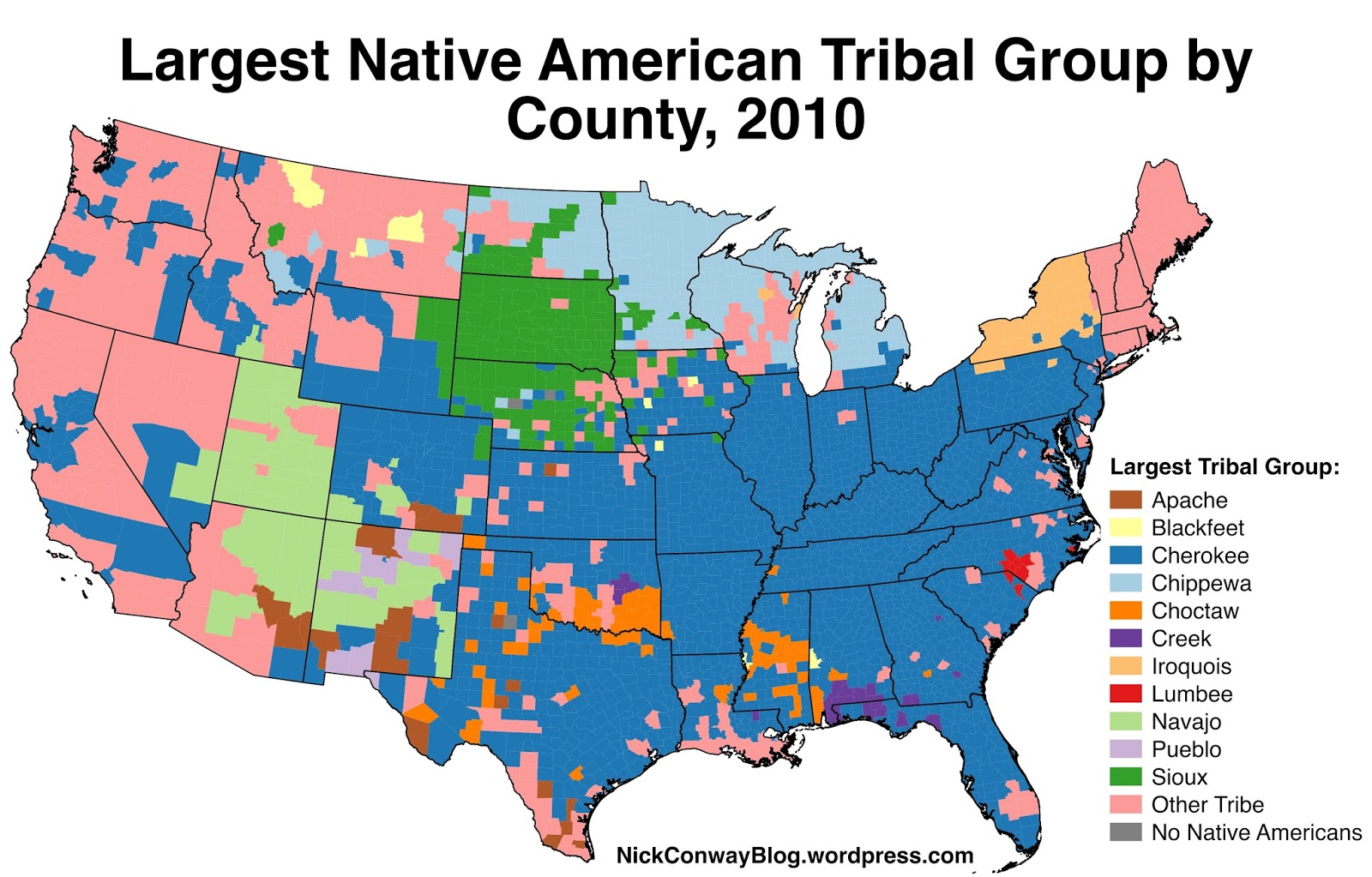Maps of Native American Tribes in the United States
This post may contain affiliate links. As an Amazon Associate, we earn from qualifying purchases.
Estimates of the number of American Indians have been made since the European discovery of the continent. Various authorities estimate that there were approximately 1,000,000 native inhabitants within the continental United States when Columbus reached the New World. They coexisted as some 500 tribes, varying in size from a few dozen to several thousand, speaking more than 300 languages.
In 400 years, the Indian population was decimated by disease, starvation, genocide, and slavery to a low of 237,000 in 1900. The Indian population grew slowly to 357,000 in 1950. The 1980 census lists the Indian population as 1.4 million.
The dramatic increase in population is partly due to more proficient census methods and individuals’ propensity to acknowledge mixed Indian ancestry. People of mixed Indian blood could become tribal members depending on their respective tribe’s minimum blood quantum requirements, varying from 1/32 to 1/2. The blood quantum issue has been a cause for wide disparity concerning the Indian population.
Table of Contents
A quincentennial map of American Indian history
The map below presents a broad view of American Indian history from an Indian perspective.

The arrival of Columbus (1492)
The prevalent theory is that at least 12,000 years ago, Indian ancestors crossed the frozen Bering Strait, fanned out from Alaska, and became the sole inhabitants of the North American continent. They established civilizations, cultures, and religions based on their acknowledged dependence on the environment and its elements.
Indians Forced Inland (1790)
European nations made sporadic attempts at settlements along the eastern seaboard. The first permanent settlement was Jamestown, an English colony established in 1607. As other colonies were established, they began an aggressive expansion policy by attrition. Indians resisted with open hostility. The first significant retaliation occurred in 1622 when Powhatan leader Opechancanough went on a rampage in Virginia and killed 347 settlers. This conflict initiated a pattern of reciprocal atrocities that lasted for nearly 300 years. By 1671, there were 50,000 settlers in the Colonies.
The 1744 Treaty OF Lancaster established the Appalachian Mountains as the physical boundary between the settlers and Indians. This general boundary was reaffirmed geographically when the 13 Colonies won their war for independence and became the United States of America. By 1790, the population of the United States was 4 million.
“Indian country” (1830)
The 1830 Indian Removal Act, signed into law by President Andrew Jackson, extinguished Indian land rights east of the Mississippi and provided for their relocation to “Indian Country,” which was defined as “the part of the United States west of the Mississippi and not within the states of Missouri, Louisiana, or the territory of Arkansas.” This definitive boundary seemed to create a brief pause in the settler’s voracious appetite for Indian lands for the next two decades. However, a tidal wave of immigrant humanity was building along the western frontier.
By 1829, the population of the United States was 12.5 million.
Immigrant Stampede (1860)
By 1850, the United States had extinguished all European land claims from coast to coast, setting the stage for the settlement of the West. Only the Indians stood in the way of progress.
The 1854 Indian Appropriation Act gave Congress the authority to establish Indian Reservations. This act provided the legal basis for the removal of specific Indians to specific locations. President Lincoln signed the 1862 Homeseat Act and Rail Road Act into law, which became significant factors in crushing Indian resistance.
The discovery of gold in the West and the availability of free land launched humanity’s stampede across the land. When the dust settled, Indian land rights had mostly been extinguished, and the devastated Indians had nearly been exterminated. In the wake of this carnage, the western half of a new nation was born.
By I860, the population of the United States was 31 million.
The Vanquished Indian (1890)
The last of the Indian wars was over, and the 1887 Indian Allotment Act was the “coup de grace” for Indian tribal land rights. The essence of this act was to eliminate the rights of Indians to hold tribal land in common, in exchange for an individualized allotment of 160 acres per head of household, with lesser acreages to individuals. The surplus land was ceded to the government to be sold to the settlers. More than 100 reservations were allotted, and over 90 million acres were abstracted from Indian lands.
In less than 100 years, Indian lands had been reduced from all land west of the Appalachian Mountains to desolate reservations, totaling less than 4% of the continental United States. The once-proud hunter-warrior had been relegated to a confined beggar’s existence of ridicule and abuse.
By 1890, the population of the United States was 63 million.
Native American lands

Historical Map of Native American Tribes in the Continental U.S.

Largest native American tribal group by U.S. county

Related post:
– The native tribes of North and Central America
– American Indian Population by County (1990 – 2017)

cool cool
Very interesting
Shocking map showing the loss of native land to the white man….grave injustice.
Can you purchase this map !?
no
Well it was a bit boring but I also enjoyed learning I mean ?
“Coexist” is a fascinating and highly significant choice of words…
The Native American tribes warred, invaded and committed rape, enslavement, torture and genocide on each other.
And all you can call that is ‘coexistence’?
Oh really and the white man caused the greatest atrocities of them all genocide. So spare men your pathetic statement.
so Mr. Righteous show me a place where we homo not so sapiens have not done the same actions on this planet where we do indeed coexist pitifully on.
interesting
Thank you for this loving information. The true Americans are a woderful race and loving, welcoming to strangers and have lived with the earth. Then they met the white man, not all of us speak with forked tongues, but the indians’. met the wrong sort of white man, the power hungry, the land grabbers etc. Where the indians’ lived they left no mark, the white men are destroying the land as they have always done. But soon, in our life time there will be a reckoning and all the beautiful people will be at peace on a wonderful earth
The map is not very good there are 570 tribal nations currently and you’ve listed thirteen with a mix of tribal governments. I Iive in tribal territory as a tribal member but also an area of mixed tribal authority and they are just that they are authorities and authoritarian and every nation believes they own my life here if I live in their area. Plus if people missed it it is clearly stated on the BIA website that all US citizens non tribal are subject to tribal government civil law and to their civil courts living in these territories. What it means is your life and property is given over to a domestic government decision making that you are not allowed to vote in or have any option to sue because the US government recognized tribal immunity and will not allow any lawsuit. Plus tribes have tons of police and police training so you’ll see lots of police cars, large government infrastructures that are granted or funded under the Native American law and order act, so you’ll see big government building on a large scale and strict laws that don’t nessisarily represent our ideas of freedom, so it’s time to research see if you are living in tribal territory and decide before you lose your property or self value whether to move to a more secured environment where you will have more financial security and secured liberty which people oddly are losing love for. I’m trying to relocate and terminate my tribal citizenship that is if I can terminate my tribal citizenship because the tribe makes that decision not the US government and keeping me a citizen means keeping me under the tribal governments judicial law although I can’t terminate just yet for financial reasons. I wish I never became a tribal member. They weaponised the government against me. Had tribal members picking on the house plus recently the female governor of I believe south Dakota was threanted by the Sioux president that she was banned from thier tribal territory and would be arrested if she traveled through tribal territory or on state highways because she supported Texas in her sending barb wire to Texas and he claimed she was trying to help Donald Trump get elected. So it’s going to get really difficult the laws in the US are because of the borders, territories, and new laws. You should check your area. California has over one hundred tribal Nations, Oklahoma where I live has thirty nine tribal Nations, south Carolina has twenty nine tribal Nations. I was looking for non tribal territory where I could move and can’t seem to find a map.